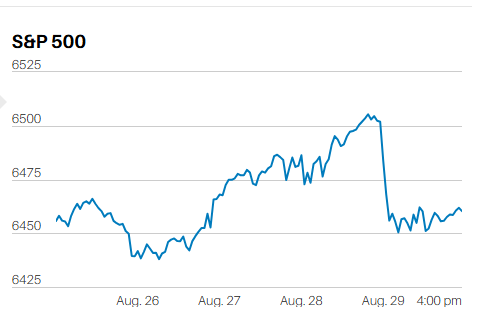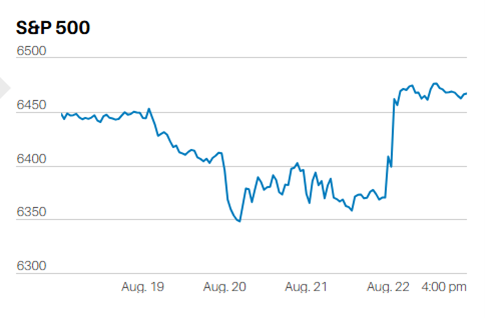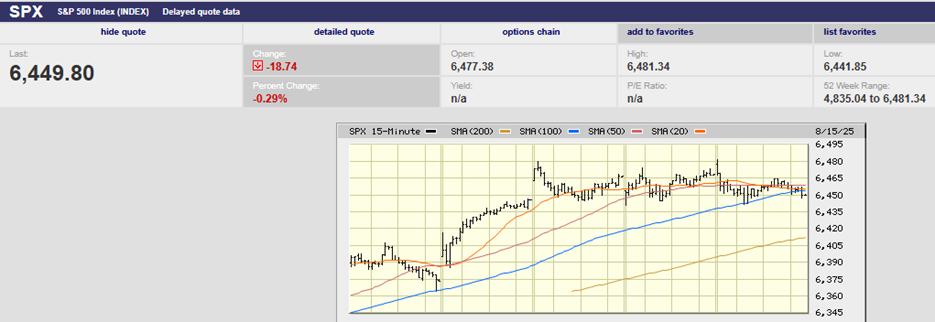Diversify with international and emerging markets

Market Update
The S&P 500 index rose 0.8% last week to finish at 4384.65. Before it rose it fell, setting a new low for the pullback in the process. The index bottomed at 4114.65 Thursday morning. The short-term trend is down even though the S&P rose on the week. A retest of the 4114.65 low is likely in the next few weeks.
Meanwhile, the Nasdaq bounced 1.1% on the week. Pundits claim tech investors bought growth on Thursday and Friday because of the war. The thinking is that the Federal Reserve won’t raise rates as aggressively now. Perhaps. It is more likely that the sharp reversal was the result of short covering and the dip-buying crowd. Remember that technicals account for almost all short-term market movements. In this case, traders believed the market was short-term oversold and stepped in to buy.
The Nasdaq’s short-term trend is also still down. The index is well below its 200-day moving average and the Nasdaq’s 200-day moving average is close to turning down. The index was down 22% from its record high at its low on Thursday. A retest of that low is likely in the next few weeks. The Nasdaq is in a bear market.
Inflation and interest rates are still much in the financial news despite the war. The likelihood of a quarter-point hike in March has increased. The federal-funds futures market estimates the odds at 79%. The futures market estimated an 80% chance of a half-point hike as recently as early February.
The Atlanta Fed’s GDPNow forecast stands at 0.6% for Q1 2022. The Conference Board forecast is for a 2.0% growth rate for Q1 2022. It forecasts a 3.5% GDP growth rate for all 2022. One possible sign that the Conference Boards’ 2022 GDP estimate is too high can be found in the high-yield bond market. The ICE BofA U.S. High Yield Index Option-adjusted spread (OAS) has risen to 3.93% from 3.01% six weeks ago. The OAS is a measure of how cheap or expensive high yield bonds are compared to risk-free Treasuries.
High-yield debt is expensive despite the recent spread widening. Investors aren’t getting paid for the risk of owning high-yield debt. The long-term average spread is 5.5%. The spread can widen to 10.0% or more during a recession. A widening spread is one sign of growing financial stress caused by a slowing economy. The widening that has occurred recently isn’t yet caused for alarm but is something to keep an eye on.
Norwood Economics has been looking for a correction in the market for more than a year. We’ve finally gotten it. We do not expect a bear market in the S&P this year. The correction should be about over. A successful retest of the Thursday lows would go a long way to confirming that belief.
Economic Indicator
The housing market continues to roar. The S&P Case-Shiller home price index rose 18.8% in December, the same as the previous month. Rental prices are rising rapidly around the country as well. The price increases are straining consumers’ pocketbooks. The consumer confidence index dropped to 110.5 in February from 111.1. Consumers are worried about high inflation according to MarketWatch.
Q4 GDP was revised up to 7.0% from 6.9%. Final sales were revised to 2.0% from 1.9%. Most of the increase in GDP in Q4 was the result of inventory build, a main reason that Q1 GDP is expected to rise less than 2%. Inventory build is not sustainable.
The Chicago Fed national activity index (CFNAI) was 0.69 in January up from 0.07 the prior month. The CFNAI is composed of 85 separate indicators. A positive reading indicates the economy is growing above trend. Nominal consumer spending rose 2.1% in January after falling 0.8% the prior month. Nominal personal income was flat after rising 0.4% in December. Real disposable income fell 0.5% while real consumer spending rose 1.5%. PCE inflation was 6.1% in January after rising 5.8% in December. The high PCE inflation number must worry the Fed. It is likely also concerned about inflation expectations, which can be a self-fulfilling prophecy. The 5-year inflation expectation is 3.0%, higher than the Fed would like.
Home Bias Can Be Costly
We do a lot of portfolio reviews for wealth management prospects. I frequently find little exposure to emerging markets. Home bias is normal. Most people prefer to invest in their own country’s stocks rather than wander abroad. Unfortunately, it reduces diversification, which in turn reduces risk-adjusted return. Diversification works in the long run as returns follow economic growth in the long run. Diversification is the only free lunch in investing.
It is true that emerging markets haven’t done much in the last decade. It is also true that they far outperformed the U.S. market from January 2000 until December 2009. The S&P 500 returned negative 0.95% annually during that period. Emerging markets returned almost 11% annually. Since January 2010 it has been all about the U.S though.
But things change. The U.S. market is expensive. Vanguard’s Chief Investment Officer acknowledged as much in an interview last week with Barron’s. “The U.S. equity market is at its highest valuation since the dot-com period,” said Gregory Davis of Vanguard. Davis went on to say that Vanguard is forecasting 2% to 4% returns for U.S. markets over the next decade. Vanguard sees international markets returning 6% to 6.5%.
As for emerging markets, they are trading at only 12x twelve-month forward earnings. The S&P 500 is closer to 20x twelve-month forward earnings. It is the widest valuation gap in almost 20 years, according to Barron’s. Norwood Economics is underweight U.S. large-cap growth stocks and overweight international and emerging market stocks. Investors would do well to put aside their Home Bias and follow suit.
Regards,
Christopher R Norwood, CFA
Chief Market Strategist











